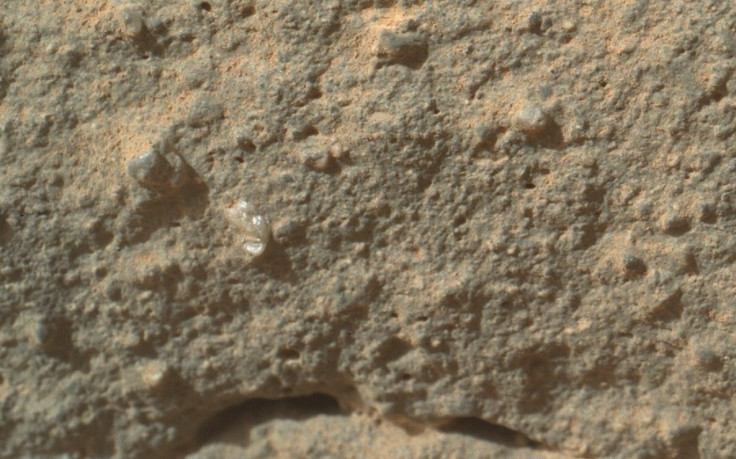Curiosity Finds 'Flower'-Like Rock Formation On Mars

NASA’s rover Curiosity hasn’t been taking any holidays from its work on Mars. One of the intrepid robot’s latest snapshots reveals an unusually bright object, likely a rock formation, that some have dubbed a Martian flower.
On the online forum Above Top Secret, user Arken pointed out the semi-translucent object and said its curves resembled the pistil, or female sexual organ, of a flower. But other users offered their own interpretations -- Sublimecraft said that the shape put in his or her mind polystyrene packing peanuts.
Some speculated that the curious feature, which seems almost pearlescent, was a bit of plastic that had fallen off Curiosity. It wouldn’t be the first time that an unusual find turned out to be a false alarm. In October, Curiosity found a tiny shred of plastic that was eventually determined to have come from the rover itself -- possibly a piece of the rocket-powered descent stage that helped guide the little craft to the surface of Mars.
But this Martian flower shape appears to be well-embedded into the native surface.
“That appears to be part of the rock, not debris from the spacecraft,” Jet Propulsion Laboratory spokesman Guy Webster told NBC News.
After more than 130 days on the Red Planet -- that’s measured in Martian time -- Curiosity is currently exploring a curvy rock feature scientists have dubbed Snake River. This twisty formation is a line of dark rock above the sand that cuts through flatter rocks.
By the mission’s 147th Martian day, Curiosity has driven more than 2,300 feet, or less than half a mile. One aim of the rover’s explorations of the area around Snake River, a shallow depression called Yellowknife Bay, is to find a suitable place to try out its special hammering drill. The drill can collect powdered samples from the insides of rocks for other instruments to analyze.
“The area the rover is in looks good for our first drilling target,” mission project manager Richard Cook said in a statement.
Curiosity’s ultimate goal is to find evidence as to whether or not Mars ever had an environment that could support microscopic life forms. It’s the largest rover sent to Mars thus far and is equipped with an impressive array of scientific gadgets: three cameras, four spectrometers, two radiation detecters, an environmental monitoring station and an atmospheric sensor.
The rover’s primary mission is scheduled to last for at least one Martian year, which is equivalent to 687 days on Earth. The plan for most of 2013 is for Curiosity to drive toward its primary destination, a 3-mile-high mound called Mount Sharp.
© Copyright IBTimes 2024. All rights reserved.




















